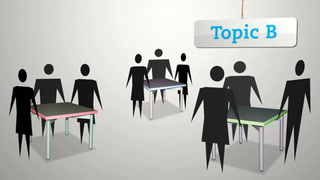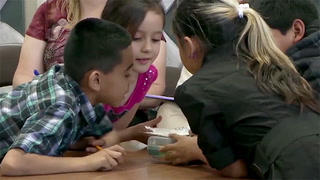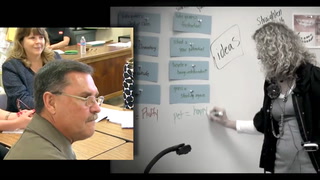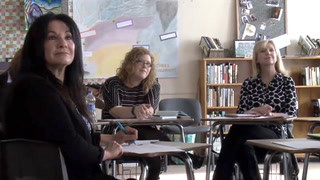Observing for Learning Transcript
Speaker 1: The Teaching Channel is committed to helping teachers get better. And we can't get better if we stay isolated.
We're going to watch this really short video.
[Students response]
Speaker 1: Where did you see students learning?
One of the most important ways that we get out of our isolation is by learning to be careful observers of other's practice as well as our own.
We want to try to not talk so much about the things that happen and focus a lot more on the moments of learning.
So today I'm here with Tulare County Office of Education to offer a unique professional learning experience where teachers will practice their observation skills while I'm actually teaching their kids. One of the things that we focused on today was how to become better observers of practice so that we can go beyond learning to just replicate strategies but to actually become more strategic teachers.
"We're going to boil this down to looking at cause and effect, all right? But we're going to start with the effect. We're not going to start with the cause. And the effect is the student learning."
I really wanted the teachers to make sure that as they observe they were first looking for moments of student learning. And when we start there we can have different conversations. Then secondly, we want to look at the teacher. It's intuitive to look at the teacher first but I want to turn that around in the conversations that we have.
So we're going to practice just a little bit with a super short video.
Speaker 1: [Tutty Time?]. Thumbs up.
Students: Thumbs up.
Speaker 1: Elbows back.
Students: Elbows back.
Speaker 1: Feet apart.
Students: Feet apart.
Speaker 1: I chose to use the [Tutty Time?] video to teach teachers how to observe. I love this video for this particular exercise for several reasons. The first is because it's short and that means that we can watch it more than once. So we can watch it one time just tryin to look for student learning.
Speaker 1: We can watch it a second time just looking for those teacher moves and then seeing how those are orchestrated together.
Speaker 1: Bottoms up.
Students: Bottoms up.
Speaker 2: Tongue out.
Students. Tongue out.
Speaker 2: Eyes shut.
Students: Eyes shut.
Speaker 1: It gives us a window into another class and it helps us think a lot more about the purpose of the observation rather than the tasks that we see.
Real quickly, moments where you saw student learning?
Speaker 1: Turn around.
Students: Turn around.
Speaker 2: Even though it seemed sing-songy, they're learning patterns of language. They're learning meter and rhythm.
Speaker 3: We were saying that they learned from each other, perhaps -
Speaker 1: They did.
Speaker 3: - by watching each other or looking -
Speaker 1: You could see when the students looked at each other -
Speaker 3: - they got lost as to what they were supposed to be doing.
Speaker 4: It was different from their teacher model, also. They were checking themselves against her.
Speaker 1: Can you think back. Is there anything that she did to create those moments of learning?
Speaker 5: I think the fact that she had them in a circle gave them the opportunity to see someone across from them as well as to beside them.
Speaker 6: Showing students her enthusiasm with her facial gestures, her body movements so students just also getting invited with that.
Speaker 1: It's hard to not want to do the [Tutty Time?] video.
Speaker 7: Very simple. But she modeled everything.
Speaker 8: Yeah, so looking at the activity. There's more purpose when she's measuring that learning.
Speaker 1: If we would have been focusing on this observation in a different way we would have been trying to figure out the steps of the [Tutty Time?] instead of the learning and that is one of the biggest shifts I think we have to make when we talk about instruction. It's not the task. We are so conditioned to talk about the tasks. Instead let's talk about the learning and that will help us talk about instruction.
















10 Comments
Cindy Leandre Nov 10, 2022 4:20pm
Very nice video!
Jeremy Dixon Jun 28, 2017 9:15pm
Adam Hopson Mar 21, 2016 10:02am
Ayda Patricia Segura Jan 25, 2016 10:29pm
Lekisha Jones Sep 23, 2015 3:48pm